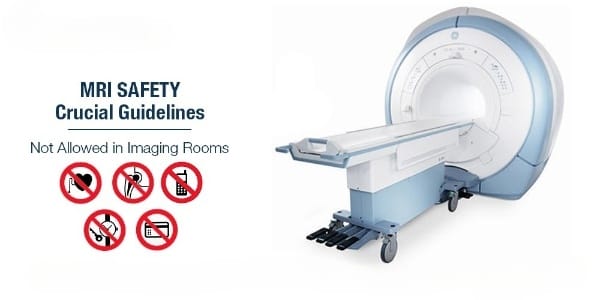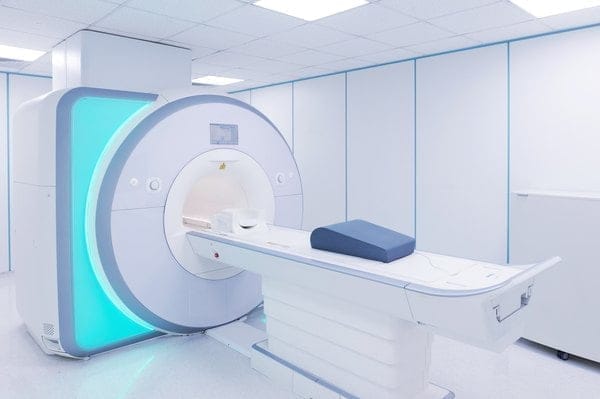
MRI Levitation Magnets: Unveiling the Science Behind Medical Imaging and Magnetic Levitation
Magnetic fields have long fascinated scientists and engineers for their ability to influence matter in profound ways—from imaging the inner workings of the human body to suspending objects in mid-air. This article explores the dual realms of magnetic technology by delving into the powerful magnets that drive Magnetic Resonance Imaging (MRI) and the principles of magnetic levitation. We will discuss how MRI machines utilize superconducting magnets, explain the physics behind magnetic levitation, compare the two technologies in detail, and answer some of the most common questions circulating online.
Table of Contents
1. Introduction to MRI Technology and Magnetic Levitation
MRI Technology: An Overview
Magnetic Resonance Imaging (MRI) is a non-invasive medical imaging technique that uses a powerful magnetic field, radio waves, and computer processing to produce detailed images of the internal structures of the body. The core of an MRI machine is its magnet, which aligns the protons in the water molecules of the human body. When these protons return to their natural alignment after being perturbed by radio waves, they emit signals that are detected and transformed into images.
Magnetic Levitation: A Brief Primer

Magnetic levitation (maglev) is the phenomenon where an object is suspended in the air using magnetic forces, effectively overcoming the force of gravity. This is achieved through various techniques that exploit the principles of electromagnetism—whether through repulsion between like poles, attractive forces counteracted by repulsive stabilization, or by utilizing diamagnetic materials that naturally repel magnetic fields. Applications of magnetic levitation include high-speed trains (Maglev trains), frictionless bearings, and even laboratory experiments that demonstrate levitation of small objects.
2. MRI Machines and Their Magnets
How Do MRI Machines Work?

At the heart of every MRI system lies a strong magnet that creates a uniform and stable magnetic field. The process involves several steps:
- Alignment of Protons: In the presence of a strong magnetic field, hydrogen protons in the body align with the field.
- Radio Frequency Pulses: Radio waves are then used to disturb this alignment.
- Signal Detection: As the protons return to alignment, they emit radio signals that are detected by the MRI’s sensors.
- Image Reconstruction: A computer processes these signals and constructs detailed cross-sectional images of the body.
Types of Magnets Used in MRI
MRI machines predominantly use superconducting electromagnets. These magnets are not “on” in the sense of conventional electromagnets where current flows continuously, but instead they are made of superconducting coils cooled to cryogenic temperatures (typically using liquid helium) to eliminate electrical resistance. This allows them to produce extremely strong and stable magnetic fields—typically in the range of 1.5 to 3 Tesla (T) in clinical systems, and even up to 7 T or higher in research settings.
Answering Common MRI-Related Questions
Do MRI machines have magnets?
Yes. MRI machines rely on very strong superconducting magnets to create the necessary magnetic field for imaging.How powerful is an MRI magnet?
Clinical MRI magnets usually operate between 1.5 T and 3 T, while specialized research magnets can reach 7 T or even higher. These field strengths are many thousands of times stronger than the Earth’s natural magnetic field.How big is the magnet in an MRI machine?
MRI magnets are large and heavy. The superconducting coils are often housed in a cryostat and can weigh several tons, with the entire magnet assembly being a significant component of the MRI system’s overall mass.What kind of magnets are used in an MRI?
MRI systems use superconducting electromagnets, which require cooling with liquid helium to maintain superconductivity.Are MRI magnets permanent?
No. The magnets in an MRI are not permanent magnets; they are superconducting electromagnets. This distinction is important because permanent magnets cannot easily achieve the extremely high field strengths required for medical imaging.Can an MRI magnet be turned off in an emergency?
While it is technically possible to “quench” (or turn off) an MRI magnet, doing so requires a controlled ramp-down process because of the massive amount of stored energy in the superconducting coils. An emergency shutdown is not instantaneous and must be carefully managed to ensure safety.

Will an MRI pull metal out of your body?
This is a myth. While the strong magnetic field in an MRI can attract ferromagnetic objects, the design of the MRI room and strict safety protocols prevent dangerous situations. It is crucial, however, that no ferromagnetic items are brought into the scanning room, as they can become projectiles.
3. Fundamentals of Magnetic Levitation
What Is Magnetic Levitation?
Magnetic levitation refers to the process of suspending an object in the air using magnetic forces without any physical contact. The two main approaches include:
- Electromagnetic Levitation: Uses actively controlled magnetic fields produced by electromagnets.
- Diamagnetic Levitation: Relies on the repulsion between a magnetic field and a diamagnetic material (a material that creates an induced magnetic field in opposition to an externally applied magnetic field).
Principles Behind Magnetic Levitation
The underlying physics is governed by electromagnetic theory, specifically:
- Lorentz Force: This force acts on charged particles moving in a magnetic field and is a key principle in electromagnetic applications.
- Lenz’s Law: States that an induced current in a conductor will oppose the change in magnetic flux that produced it. This principle is essential in understanding how magnetic damping and stabilization work.
- Diamagnetism: A form of magnetism where materials create a weak opposing magnetic field when exposed to an external magnetic field. Even water and biological tissues are slightly diamagnetic.
Is Magnetic Levitation Possible?
Absolutely. Magnetic levitation is not only possible but is already employed in various real-world applications. Maglev trains, for instance, use magnetic levitation to achieve high speeds with minimal friction. In laboratory settings, experiments have successfully levitated small objects and even living organisms like frogs using extremely high magnetic fields.
4. Comparing MRI Magnets and Magnetic Levitation
While MRI magnets and magnetic levitation systems both rely on the principles of electromagnetism, their applications and designs differ substantially.
| Aspect | MRI Magnets | Magnetic Levitation Magnets |
|---|---|---|
| Primary Purpose | Medical imaging | Lifting, propulsion, frictionless transport |
| Type of Magnet | Superconducting electromagnets | Can be superconducting, electromagnetic, or permanent |
| Field Strength | Typically 1.5 T – 3 T (clinical) to 7 T+ (research) | Varies widely; often lower for everyday applications |
| Cooling Requirements | Requires cryogenic cooling (liquid helium) | Not always required; depends on the system design |
| Design Considerations | Uniform, stable field for imaging | Controlled field gradients for stable levitation |
| Operation | Continuous and highly controlled | Often dynamically controlled with active feedback |
MRI machines are designed to generate a stable, uniform magnetic field over a relatively large volume to produce high-resolution images, whereas magnetic levitation devices focus on creating variable field gradients to produce lift and maintain stability.
5. Magnetic Levitation Techniques and Applications
Magnetic levitation is not a one-size-fits-all technology. There are several techniques, each with its own set of principles and applications.
Electromagnetic Levitation
 Electromagnetic levitation uses controlled magnetic fields to counteract the force of gravity. An example of this is the maglev train, where electromagnets mounted on the train and the track interact to lift and propel the train forward. These systems require precise control algorithms to maintain stability and ensure a smooth ride.
Electromagnetic levitation uses controlled magnetic fields to counteract the force of gravity. An example of this is the maglev train, where electromagnets mounted on the train and the track interact to lift and propel the train forward. These systems require precise control algorithms to maintain stability and ensure a smooth ride.
Diamagnetic Levitation
Diamagnetic materials, such as bismuth and graphite, develop an induced magnetic field in opposition to an external magnetic field, allowing for passive levitation. One of the most famous experiments in diamagnetic levitation involved levitating a small frog in an ultra-high magnetic field—a striking demonstration of the phenomenon.
Superconducting Levitation
Superconductors exhibit perfect diamagnetism below a critical temperature—a phenomenon known as the Meissner effect. When a superconductor is placed in a magnetic field, it expels the field lines and can thus levitate above a magnet or vice versa. This principle is harnessed in some advanced maglev applications.
| Levitation Technique | Core Principle | Example Application | Key Advantages | Limitations |
|---|---|---|---|---|
| Electromagnetic Levitation | Controlled magnetic field gradients | Maglev trains, industrial conveyors | Precise control and dynamic adjustment | High power consumption; complex control systems |
| Diamagnetic Levitation | Natural repulsion in diamagnetic materials | Laboratory demonstrations, levitating small objects | No active control needed; passive stability | Requires very high magnetic fields for noticeable effect |
| Superconducting Levitation | Meissner effect in superconductors | Advanced research prototypes, frictionless bearings | Extremely efficient; no energy loss due to resistance | Needs cryogenic cooling; sensitive to temperature fluctuations |
6. Linking MRI Technology with Magnetic Levitation
Although MRI machines and magnetic levitation systems serve different purposes, they share a common foundation in the principles of magnetism and electromagnetic theory. Here are some interesting connections:
- Shared Physics: Both systems rely on powerful magnetic fields and a deep understanding of electromagnetic forces. In MRI, the field is used to align nuclear spins for imaging; in levitation, the same forces counteract gravity.
- Superconducting Technologies: Superconducting magnets are at the heart of both high-field MRI machines and certain levitation systems. The superconducting state allows for extremely high currents and magnetic fields without energy loss, which is critical in both applications.
- Research Synergy: Advances in superconducting materials and magnetic field control have benefited both MRI technology and magnetic levitation research. Innovations in one area often lead to improvements in the other, illustrating the interconnected nature of modern electromagnetic research.
Example: Diamagnetic Levitation in High Magnetic Fields
An intriguing demonstration of magnetic levitation is the levitation of small objects (and even living organisms) using ultra-high magnetic fields—the kind of fields generated by MRI magnets. Although clinical MRI machines are not designed for levitation, their magnetic strength can produce noticeable diamagnetic effects. For instance, experiments have shown that a frog can levitate in a magnetic field strong enough to overcome gravity when placed in a controlled environment. Such demonstrations highlight the versatility of magnetic fields and spark interest in further research into both medical and levitation applications.
7. The Physics Behind the Magic
To truly appreciate the sophistication of MRI and magnetic levitation, it is useful to delve into some of the fundamental physics concepts:
Electromagnetism and Maxwell’s Equations
Both MRI and magnetic levitation are rooted in Maxwell’s equations, which describe how electric and magnetic fields are generated and interact. These equations help explain:
- How magnetic fields are produced by currents (Ampère’s law)
- The behavior of magnetic fields in different materials
- The interaction of magnetic fields with moving charges (Faraday’s law of induction)
The Lorentz Force and Its Role
The Lorentz force is the force exerted on a charged particle moving in a magnetic field. In an MRI machine, the protons in the body experience forces that align them with the magnetic field. In levitation experiments, the Lorentz force (in combination with induced currents and magnetic gradients) plays a crucial role in stabilizing and lifting objects.
The Meissner Effect in Superconductivity
The Meissner effect is a hallmark of superconductivity: when a material transitions into its superconducting state, it expels magnetic fields from its interior. This is what allows superconducting magnets to operate with such high efficiency and also enables superconducting levitation, where a superconductor can be made to float above a magnetic track.
Diamagnetism
Diamagnetism is exhibited by materials that create an induced magnetic field in opposition to an applied magnetic field. Although the effect is weak in most materials, in ultra-high magnetic fields (like those produced by an MRI magnet), diamagnetic forces can be strong enough to cause levitation of light objects. This is the principle behind some of the most fascinating magnetic levitation experiments.
8. Magnetic Levitation Research and Future Directions
Ongoing Research
Research into magnetic levitation continues to expand, driven by the potential for revolutionary applications in transportation, energy storage, and industrial automation. Areas of active investigation include:
- Improved Control Systems: Developing better algorithms for stabilizing levitated objects.
- Advanced Materials: Discovering or engineering materials with enhanced diamagnetic properties or superconducting characteristics.
- Energy Efficiency: Reducing the power requirements for levitation systems, making them more viable for everyday applications.
- Scalability: Transitioning levitation technology from laboratory demonstrations to large-scale commercial applications, such as public transportation systems and frictionless bearings.
Emerging Applications
The future of magnetic levitation holds promise in many fields:
- Transportation: High-speed maglev trains offer the potential for ultra-fast, energy-efficient travel without the wear and tear associated with conventional rail systems.
- Medical Devices: While MRI machines are already a cornerstone of medical imaging, advances in magnetic levitation could lead to novel devices that allow for non-contact handling of delicate biological samples.
- Industrial Automation: Levitation-based systems can be used to transport fragile or high-precision components without physical contact, reducing contamination and mechanical wear.
- Energy Storage: Flywheel energy storage systems utilizing magnetic bearings are being developed to reduce friction losses and improve efficiency.
The Intersection of MRI and Levitation Research
Innovations in superconducting magnet technology benefit both the field of medical imaging and the development of magnetic levitation systems. The research into reducing the size, cost, and complexity of superconducting magnets could lead to more compact and energy-efficient devices in both domains. As material science and cryogenics advance, we can expect continued cross-pollination between these fields, spurring improvements in imaging clarity and levitation stability alike.
9. Safety Considerations and Common Myths
MRI Safety Protocols
 MRI machines, due to their strong magnetic fields, require strict safety protocols:
MRI machines, due to their strong magnetic fields, require strict safety protocols:
- Screening: Patients and staff must be screened for metallic implants or devices.
- Controlled Environment: The MRI room is designed with safety features to prevent ferromagnetic objects from entering.
- Emergency Procedures: Although turning off an MRI magnet is not instantaneous, controlled quench procedures are in place for emergencies.
Debunking the “Metal-Pulling” Myth
A frequently asked question is whether an MRI can pull metal out of your body. In reality:
- Ferromagnetic Hazards: While ferromagnetic objects are dangerous if brought into the MRI suite, the human body is not composed of ferromagnetic materials in quantities that would lead to such an event.
- Implant Compatibility: Many modern implants are made from non-ferromagnetic materials, and rigorous testing ensures they are safe for use in an MRI environment.
- Controlled Magnetic Field: The magnetic field in an MRI is precisely controlled and homogeneous over the imaging area, making it unlikely to produce abrupt, localized forces that could “pluck” metal from the body.
Conclusion
The technology behind MRI machines and magnetic levitation systems illustrates the incredible power and versatility of modern electromagnetism. MRI machines employ superconducting electromagnets to generate exceptionally strong and stable magnetic fields that allow for detailed medical imaging—a process that, while not designed for levitation, is rooted in the same physical principles that enable objects to be suspended in mid-air.
Magnetic levitation, on the other hand, harnesses these principles for applications ranging from high-speed transportation to cutting-edge scientific experiments. Whether it is the elegant demonstration of a levitating frog in a high magnetic field or the practical design of a frictionless Maglev train, the science of magnetism continues to push the boundaries of what is possible.
By exploring the shared physics and technological innovations behind both MRI and magnetic levitation, we not only gain a deeper understanding of these fascinating fields but also open the door to future advancements that may one day merge medical imaging with novel transport and industrial applications.
The hot questions—ranging from the strength and type of magnets used in MRI machines to the possibility and mechanics of levitation—are addressed by a foundation of rigorous scientific research and technological progress. As research continues and new materials and control systems are developed, the capabilities of both MRI technology and magnetic levitation systems are likely to expand, offering exciting prospects for healthcare, transportation, and beyond.
In summary, while MRI machines are designed primarily for the benefit of medical diagnostics, their core technology shares remarkable similarities with the magnetic levitation systems that promise to revolutionize our approach to movement and contactless manipulation. This intersection of disciplines exemplifies how fundamental physical principles can be applied in diverse and transformative ways.
Frequently Asked Questions (FAQs)
1. What is the difference between MRI levitation magnets and regular MRI magnets?
Answer: MRI levitation magnets utilize magnetic levitation principles to reduce mechanical vibrations and improve imaging precision. Traditional MRI magnets primarily focus on generating a strong and stable magnetic field for imaging.
2. How do MRI magnets create stable magnetic levitation?
Answer: MRI magnets generate strong, uniform magnetic fields that interact with superconducting or diamagnetic materials to achieve levitation, minimizing physical contact and vibration.
3. Are MRI levitation magnets harmful to the human body?
Answer: No, MRI levitation magnets are designed to be safe for patients. The strong magnetic field does not cause harm but can interact with metal implants or electronic devices.
4. How do superconducting magnets enhance MRI levitation?
Answer: Superconducting magnets create extremely strong and stable magnetic fields with minimal energy loss, making them ideal for both MRI imaging and magnetic levitation applications.
5. Can MRI levitation magnet technology be applied outside the medical field?
Answer: Yes, magnetic levitation technology has applications in transportation (maglev trains), industrial automation, and even space exploration.
6. Why does MRI require a low-temperature environment for magnetic levitation?
Answer: Many MRI machines use superconducting magnets, which need to be cooled to cryogenic temperatures (often with liquid helium) to maintain their superconducting state and achieve strong magnetic fields.
7. Does magnetic levitation technology affect MRI imaging quality?
Answer: Yes, magnetic levitation can reduce mechanical vibrations, leading to sharper and more accurate MRI images.
8. Can magnetic levitation MRI technology reduce noise during scans?
Answer: Yes, by minimizing physical vibrations and mechanical movements, magnetic levitation can help reduce the loud noises typically produced by traditional MRI machines.
9. What is the future of MRI magnetic levitation technology?
Answer: Future advancements may focus on more efficient superconducting materials, reduced cooling requirements, and improved imaging capabilities, making MRI scans faster and more comfortable.
10. Are magnetic levitation MRI machines more expensive than traditional MRI machines?
Answer: Yes, due to the advanced technology, superconducting materials, and cooling systems required, magnetic levitation MRI machines tend to be more costly.
11. Can magnetic levitation MRI be used for space medicine research?
Answer: Yes, researchers are exploring magnetic levitation for zero-gravity medical imaging, which could be beneficial for astronauts in space missions.
12. Does magnetic levitation MRI provide advantages in cancer detection?
Answer: Yes, by improving image stability and resolution, magnetic levitation MRI can enhance the detection of tumors and abnormal tissues, aiding in early diagnosis and treatment planning.
These FAQs offer additional insights into MRI levitation magnets and their potential applications.










